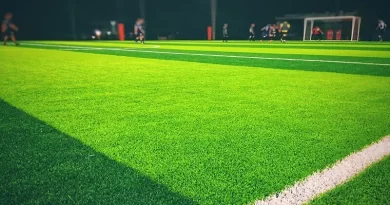Importance of Water Conservation in Landscaping
Water conservation is a significant concern for many people worldwide and is something everyone can do to help the environment. If you are considering landscape designs, consider how you can use water wisely.
Landscaping designs with water conservation in mind
Landscaping designs with water conservation in mind can make your yard look good without using many resources. These designs may include the latest and most remarkable technologies, such as rainwater harvesting, which can help save your landscape from runoff and pollution. In addition, choosing plants with water-saving attributes, such as drought-tolerant varieties, is a wise decision.
You may need to change the design to meet your landscape’s water conservation goals. For instance, you can replant the lawn with low-watering species. Another strategy is to group plants with similar water requirements.
A simple trick to conserve water is to add organic soil amendments. These may include grass clippings, manure, or wood chips, which will improve the moisture content of the soil and prevent runoff.
The “right plant in the right place” may improve the appearance of your landscaping while minimizing your water cost. This strategy is also an excellent way to avoid common landscaping mistakes. For example, it is essential to remember to prevent planting thorny plants near walkways or driveways.
Commercial and industrial water conservation
Water conservation is a significant concern for the commercial, industrial, and institutional (CII) sectors. Facilities ranging from hospitals to hotels to retail sales outlets require fresh water. There are many ways to conserve, from arranging landscaping into hydro zones to installing a drip irrigation system.
The first step toward efficient water use is a facility water audit. It can provide a benchmark for your future efforts. It will also help identify potential leaks and areas for repair.
In addition to reducing your utility costs, water efficiency can benefit your workplace culture. Having a team of employees aware of their waste and can help make a conservation plan can be a positive component of your business’s water management.
Rainwater harvesting
Rainwater harvesting is a method to collect runoff water. It can be collected from the buildings’ rooftops, ground surfaces, or natural drainage lines. It is not only a sustainable solution but also an eco-conservation technique.
Depending on the amount of rain, it is possible to collect up to 500 gallons of water from a half-inch of rainfall. But more is needed to meet the demands of a building. In some cases, a larger tank is required.
Rainwater is salt-free and clean. It has beneficial ingredients for plant growth and can be used for irrigation and washing clothes. Using rainwater as a source of water can also contribute to reducing the impacts of flooding.
Rainwater harvesting is an efficient and economical method to deal with the current water crisis. Moreover, it can help reduce the load on existing water infrastructure.
According to the United Nations, the world will run out of fresh water by 2050. Water conservation is critical to maintaining adequate resources for agriculture. With population and economic growth increasing, local water resources are becoming increasingly limited.
Strategies for everyday people to reduce home water use
Every day people can reduce their home water use in various ways. It’s a simple and inexpensive way to help protect our natural resources and the planet.
For example, you can use a water-saving showerhead. An aerated shower head combines water and air, allowing you to shower for less time. You can also turn off the tap while shaving, lathering, or brushing your teeth.
Another way to conserve water is to wash dishes by hand. Instead of running the tap, fill a pan with water and rinse your dishes quickly. It reduces the amount of water you use and wastes less energy.
You can also save water by installing a rain barrel. The resulting water can be used for your lawn and garden.




